|
FAQs about Flatworm Identification
5
Related Articles: Flatworms
(incl. Planaria), Pest
Flatworm Control by Anthony Calfo, Worms, Featherduster
Worms,
Related FAQs: Flatworm
Identification, Flatworm ID 2,
Flatworms/Planaria 1, Flatworms 2, Flatworms 3, Flatworm ID 3, Flatworm ID 4, Flatworm ID 6, & FAQs on: Flatworm Behavior, Flatworm Compatibility, Flatworm Control, Predator Control, Chemical Control, Flatworm Selection, Flatworm Systems, Flatworm Feeding, Flatworm Disease, Flatworm Reproduction, & Worms, FAQs: Worm Diversity FAQs, FAQs 2,
FAQs 3, & Worm IDs
1, Worm IDs
2, Worm IDs 3, Worm IDs 4,
Worm IDs 5, Worm IDs 6, Worm
IDs 7, Worm IDs 8, & Worm ID
FAQs by Group/Phylum: Flatworm
Identification ID, Nemertean,
Proboscis, Ribbon Worm ID, Nematode, Roundworm ID,
Nematomorpha,
Horsehair Worm ID, Acanthocephalans,
Thorny-headed Worm ID, Polychaete Identification, Polychaete ID 2, Tubeworm ID, Hirudineans, Leech ID, Echiuran Worm ID, Invertebrate Identification,
|
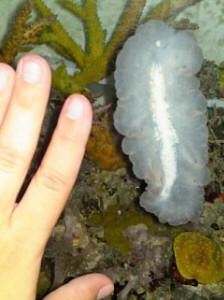
|
|
Flatworm or something else?
4/11/18
Hi WWM Crew,
<Adam>
Was hoping to get an ID on the mysterious creatures in the attached photos.
<Appear to be Acoel flatworms... Likely no big deal. See WWM re>
Thanks for your help!
Adam Clayton
<Welcome. Bob Fenner>
|
.jpeg)
 crop
crop |
|
Re: Flatworm or something else?
4/12/18
Thanks, Bob!
<Welcome Adam. BobF>
|
|
Flatworms? 2/27/16
Hi, Could you tell me what kind of flatworms these are?
<Not from these pix; no. Likely Acoels...>
I don’t have many but there are a few on my glass. I have a Hoeven’s Wrasse in
my quarantine but he still has a few weeks before I put him in my tank. It’s a
new tank 2 months old and I only have 2 clowns in the tank. I’m wondering if I
should wait for the wrasse or does with flatworm exit?
<I'd wait. You should read:
http://www.wetwebmedia.com/pestflatwrmanthony.htm
and the linked files above. May be that having "some" of these are better than
possibly poisoning, polluting your system.>
Was hoping to get your thoughts.
Jay
<Please learn to/use the search tool, indices on WWM. Bob Fenner>
|
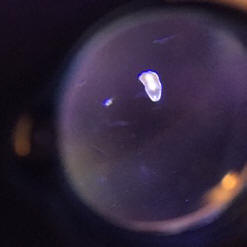 |
|
Tiny worm? 1/30/16
Hello!
I was introducing a peppermint shrimp into my tank and noticed this little guy
on the sand next to it. I was able to snag it out before it disappeared. It's
about 1mm and seems to have a circular mouth. It also moves fairly fast for
something this size. Could you identify it for me?
<Tis a Acoel flatworm of some sort... Go ahead and search, read on WWM re...
some folks over-react... Me? Meh.>
Thanks a million!
Abby
<As many welcomes. Bob Fenner>
|
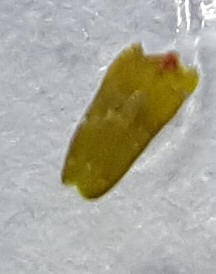 |
|
flat worm id? 12/2/14
what kind of flat worm is this ? it was maybe 4-5 cm long..
<Mmm; don't know other than that it IS a flatworm. Bob Fenner>
|
.JPG) |
|
flatworms in reef tank? 8/17/13
Hi,
<James>
I've noticed what appears to be white flatworms with little antennas
<Mmm, Platyhelminths don't generally have "antennae">
moving across the sides of my tank. I have not seen them on any of the
live rock just the glass, so I have been taking them out when I can.
Today I noticed a one larger one and included a picture. From what I can
gather on-line some of these things are VERY BAD and some or so-so
(won't destroy your tank). I have a 165 gallon with Fiji live rock going
through the cycling process (been about 4 weeks now). They don't look
like the rust brown flatworm but then again I am only seeing the
underside of them which is white. I'm waiting for the bad news ;-(
Thanks for you help!
<I wouldn't over-react. Likely this/these are of little to no matter;
and will likely "pass" in time on their own. If it were me/mine, I would
do nothing (other than read on WWM re Flatworms period) for now. Bob
Fenner>
<Oh! In enhancing your pic; this appears to be a Gastropod... See WWM re
Stomatella. BobF> 8/17/13
|
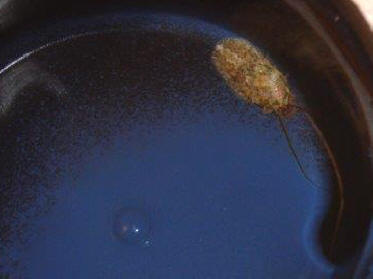 |
|
Nudibranch? ID 5/22/13
Hi
<Ash>
Last night I found this little critter on my torch coral, I have noticed it
has been losing a tip every week or so but nothing drastic.
I touch the approach that if it is on a coral it most likely eats it but
wondered if you knew more. It's very light averse and almost
completely flat. It's about one inch long.
Cheers
Ash
<This appears to be a flatworm. Can you describe its
movement/locomotion?
Bob Fenner>
|
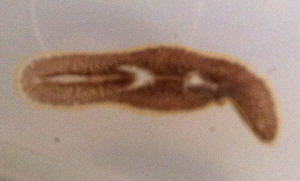 |
Re: Nudibranch? ID
5/22/13
Hi Bob,
<Ash>
Thanks for the quick reply,
<Welcome>
The end to the left of the photo (with the line clear line down the centre
of the animal) appears to be the "head" end and is the direction of travel.
It appears to move very smoothly and quite quickly in the direction
of travel with contraction.
<Ahh, a Platyhelminth>
On close inspection there is a very very thin orange line around the edge of
the work and the coloration is made up of brown spots and lines surrounding
the clear pattering through the centre.
Ash
<And notably; I'll note... a bold gross color and marking appearance to a
Chiton... perhaps camouflage. Not likely damaging anything here. Bob Fenner> |
Help Help!
4/23/13
Please help me ID these little guys. I found them today as I scraped the
glass. They are tiny, black, slimy, & they move fast!
<Flatworms. Read more here--
http://www.wetwebmedia.com/flatworms.htm >
Sent from my iPhone
<Sent from Jordan's laptop.>
|
Brown Specs on Live Rock 2/9/13
Hi - I have a 110 SPS tank with a few soft corals that bee up and
running for 8 months. I recently noticed brown specs appearing on my
live rock in the last 2 week. They almost give the appearance small
flake food.( see attached photos). What do you think it is?
<Impossible to tell from these pix>
They smear when you touch them.
<A good clue... still could be many things... algal, Cnidarian,
Poriferan...>
I am assuming that they are some type of brown algae. I should mention
that about 6 weeks ago I added 3 EcoTech Marine Radions LED to this
tank but I have been slowly increasing the intensity to acclimate the
tank. I am only running the max intensity of these light at 48%. Coral
are responding well.
However this Brown type algae is showing up all over my live rock.. I
can certainly back down my lighting intensity but just want to make sure
I don't have a bigger problem that I think. Thanks -Ron
<I'd get a look/see through a microscope... one that can make images...
as detailed on WWM... Send along these pix. Bob Fenner>
|
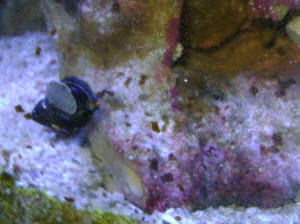 |
|
Re: Brown Specs on Live Rock 2/10/13
Thanks for the response! Just to let you know, I took a piece of rock to
my LFS. They said it was red flatworms.
<Ahh!>
I never had flatworms and I've been in the hobby for 20 years. I added a
six line wrasse to the tank today. How long do you think it will take
the wrasse to eradicate the problem?
<Mmm, depends... mainly on the species of Flatworm... some are
unpalatable to most all fishes. See WWM re>
I was reading on your site it said to add carbon which I ready have carbon
reactor running. is there anything else I can do?
<In terms of what? See WWM...>
Also what would happen if the problem of the flatworms went unaddressed
and what should I do if I do see any progress from the wrasse?
<All covered... on... WWM. Too many folks panic re... not usually a real
issue. BobF>
|
|
Mystery guest discovery 9/16/12
Hi,
<Good morning Mike>
Would you guys watch my clip of a guest in my 7yr old tank that I
discovered during a water change? I'd love to know what it is.
<Appears to be a Polyclad flatworm. I would remove it.>
Thanks!
<Welcome.>
Mike
<Jordan>
|
| WWM Video/IMG_1429.MOV |
Re: Mystery guest discovery 9/16/12
What danger does it pose?
<They're predators. Diet consist of a wide variety of sessile organisms and
invertebrates.>
<Jordan> |
|
Need help identifying this critter....
6/25/12
Hello again.
<Bob>
I have noticed a few of these recently, one in my main tank and one in
my refugium. I need some help identifying, have searched the site and
not found or have missed a match.
I have had a few egg layings by my Nassarius snails, but I would think
that even in the larval stage this guy would have some type of shell by
now. He is about 3/16" long, has grown quite a bit in the last 2 weeks.
Thanks for any help and thanks again for what you do. Your knowledge is
invaluable.
Bob Colley
Thornton, Colorado
<Look to be a flatworm of some sort... Search on WWM, the Net w/ the
genus Waminoa... and as Doug Adams might say, "Don't Panic". Bob Fenner>
|
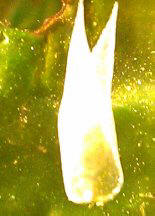
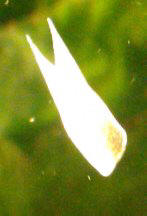 |
|
Strange worms on glass -- 12/19/11
Good afternoon. Thank you for having this great site. I'm
hoping that you can help me.
This morning I noticed about 100 of these strange yellow worms
crawling all over the glass in my saltwater fish
only tank. Should I be worried. What do you think can be. Thank
you.
<Mmm, appear to be some sort of flatworm,
"Planaria"... not really a worry, and will very likely
disappear on their own in time (due to predation, lack of
food...). Bob Fenner>
|
|
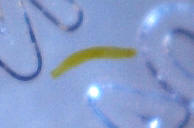
|
|
Identification Help (Polyclad) New Species ??
11/29/11
Hey Guys/Gals at WWM;
<Howsit Noel?>
Thanks for the time, dedication and the services you provide to
us enthusiasts as I often find myself constantly referencing back
to your site for more info & research. So cheers for
that!
<Thank you>
Now for the issue at hand. Recently on 11/24/2011 upon viewing
& inspection of a friends LPS reef tank. I discovered these
interesting polyclads (pics attached 827X687) on the underlying
branches of his Euphyllia ancora.
Upon further inspection, I found two more and quickly placed them
into a specimen container. These particular polyclads ranged from
1/4 inch to a full 1 inch long and say about 1/8 inch in width.
I've researched and posted some info on my local forum and
club forum for some assistance in indentifying this Polyclad and
seem to come up empty handed. I have researched your 17 pages of
worms and 7 pages of Polyclad identification along with the FAQs
and came across this thread.
http://www.wetwebmedia.com/fltwmidfaq3.htm
(Same Polyclad)
This raises a concern to me as this might be of a new species and
a future problem for LPS corals. Since the capture of these
polyclads on the above mentioned date, on 11/27/2011 (3 days
later) one of the three has laid eggs (pic enclosed). So now
we(reefing community) will have a reference point as to an
incubation period before the eggs hatch (guess we can all benefit
from knowing that).
<Yes>
Before I forget... here's a little information about his
tank: 155Bowfront
72" LED Fixture, NO SPS AT ALL. Strictly an LPS (large polyp
stony) coral Fanatic(LOL).. and mostly, if not all his corals
originate from Australia.
Param.s are excellent and irrelevant to this issue.
Hence I ask WWM for some assistance. If you have any more info
regarding the identity of this type of Polyclad, or where I can
check for more info regarding the OP thread I linked. I would
greatly appreciate it. With over 4,500 species of polyclads,
I'm sure we can find one that matches and where it originates
from!! LOL!
Thank You & Warm Wishes,
Noel. NY Reef Club
<Mmm, I don't... but do want to encourage you to seek help
w/ this ID (an old roommate did his grad. work on the
Turbellarian Paravortex, the causative organism of "black
spot disease"...). By sending these pix and specimens to
folks who deal w/ Flatworm taxonomy. You can find them via a
quick search on the Net... my own preference is to deal w/ local
folks if possible. Do you live near a Natural History Museum?
University w/ a Bio./Zoology dept.? Bob Fenner>
|
|
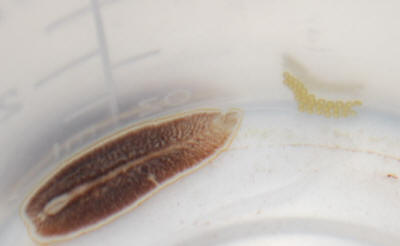
Re: Identification Help (Polyclad) New Species ??
11/29/11
Hello Bob.
<Howdy again Noel>
It is an honor.... and whoa, that was a fast and timely
response.. LOL.
Actually, I do have a very good friend of mine, who's
daughter is studying Marine Biology at a College located in
Purchase NY who can possibly assist.
It hadn't dawned on me to ask, and I'm sure this might
serve her as extra credit. Great idea! Also, there is The
American Museum of Natural History here, however I'll doubt
I'll receive any assistance in the helping with the identify
of this Polyclad, but it is worth a shot. l will keep you posted
as to the progress made so that we may have a better
understanding and hopefully determine if this will be of a great
concern to us all.
<Appreciate this>
Warm Regards to You and the WWM Crew,
Noel. NY Reef Club
<Thank you. BobF>
|
|
Identification 10/23/11
Hope you can help identify this thing growing on my overflow
pipe. Thanks.
<... looks to be a flatworm of some sort. See WWM re.
B>
|
|
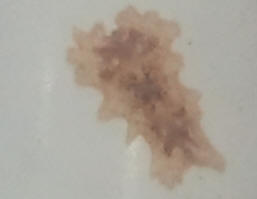
|
|
Unknown parasite/ organism found in filter
5/23/11
WWM crew,
<Katie>
I have been searching the site for a while, and can not find
anything to help me out. I am tearing down a 55 gallon, and was
cleaning the filter and this weird little critter came out.
<Looks to be some sort of flatworm... these are often only
mildly damaging... more like "space parasites" then
actual; some are "free living">
The critter DID not come out of the intake or outtake holes, but
I am still interested to know what it is.
The 55 gallon was a holding tank for a couple of my brackish
water red and green scats, that have since been moved over to the
90 they came from (I moved 800 miles, and could not part with
fish). I did an extensive look at the fish, and I do not see
anything that would hint it is a parasite. They are eating like
pigs, and they all have there color. No red streaks, or visible
irritations of the scales on any of them.
<Not at all likely parasitic or environmentally damaging to
fishes>
System set-up was a 55 gallon, with a Jager heater (set to 80),
Rena XP2 canister filter, Whisper 300 air pump, sand substrate
(CaribSea, to be specific), and the SG ranged anywhere from
1.008-1.0015. I fluctuate the SG, for better health of the Scats.
Levels of Nitrates, Nitrites, and Ammonia, all read 0.
The critter is about a centimeter, by a centimeter, and has veins
that are running the entire surface of the body. In the center,
there is a mass that looks like blood. To me it almost looks like
a tick you would pull off a furry animal. I looked in the books I
had available to me, and did not see anything like this. I also
have NOT punctured the center blood looking mass
out of fear of what could happen. Any information you could tell
me would be greatly appreciated.
Until then, back to cleaning!
*Katie*
<Thank you for your message. Bob Fenner>
|
|
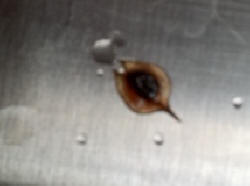 Enlarged, but blurrier Enlarged, but blurrier
|
|
Planaria id 4/25/11
Hello wwm,
<Cass>
You were very helpful last time I found one of these. Perhaps you
are able to id this one.
<Is a flatworm of some sort. Read here: http://wetwebmedia.com/flatworms.htm
and the linked files above>
Should it stay or should it go?
<... as you'll read...>
I can say that its been in the tank for at least six months.
Found it in a filter sock. Keeping it in the sump for now.
Thank you,
Cassidy
<And you, Bob Fenner>
|
|
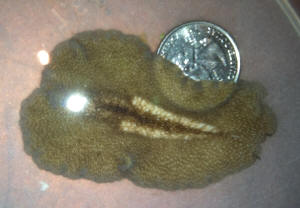
|
|
Saltwater Question - Live Rock Creature ID
4/6/11
Hello WWM crew,
<Sharon>
Thank you all for taking the time to help answer the many
perplexing questions this hobby provides.
<Welcome>
I've read the site for years but due to the abundance of
information I have not had to ask any questions. Today is the day
I am stumped. Despite searching whatever terms I could think of I
cannot ID this creature. It appeared as a flat *thing*,
<Ahh! Indeed>
maybe 3/4 of an inch in length, and a half inch across. It
appears rectangular but the edges are slightly rounded, it almost
looks like if you rolled out cookie dough. It is an orangish/tan
color. It presented itself on a rock after I rearranged my tank.
Attached is a photo showing this creature in a variety of phases,
I apologize for the poor quality in advance. The creature
began
flat looking, then became somewhat curled up, then became in a
"U" shape.
It moved from the rock to the substrate eventually, it was
fascinating to watch. I researched various worms but I did not
have any luck finding a positive identification. Any help or
guidance towards the right path would
be greatly appreciated.
Thank you for your time,
Sharon
<This is a flatworm of some sort/species. If singular and in a
good-sized volume (tens of gallons), I'd leave, enjoy. If
there come to be many... Do read here: http://wetwebmedia.com/fltwmcont.htm
and as much of the linked files above as gives you sufficient
input to move forward, stay put. Bob Fenner>
|
|

|
|
Worm ID -- Likely Acoel Flatworms --
3/10/11
Greetings crew!
<Hello there, Lynn here today!>
Was walking by my tank earlier than usual this morning, before
lights went on, and noticed that there were these tiny worms
crawling all over the rocks and my yellow polyps. Never seen them
before as the polyps are normally open and cover them.
<It happens that way sometimes.>
Any idea on what they are? Are these the dreaded flatworms? Have
not found any similar pics to them.
<Well, I'd need a more close-up shot to confirm, but they
do look a whole lot like Acoel flatworms, aka 'Rust-Brown
Planaria'. For more photos and information regarding control,
please see the following links:
http://www.wetwebmedia.com/corldisart.html
http://www.wetwebmedia.com/pestflatwrmanthony.htm
Good close-up photos of Convolutriloba spp. for comparison:
http://sites.google.com/site/macropyga/identification
Enter 'Acoel + Planaria' into our Google search engine
for many related FAQ's: http://www.wetwebmedia.com/Googlesearch.htm
>
They are about 3-4mm long, reddish color, smooth body.
<Fairly typical>
Pic attached. Best I could get of them.
<Thanks. Do let us know if what you have is something other
than the Planaria/flatworms listed above and we'll give it
another shot. Be sure though, to include a close-up photo so we
can see a bit more detail.>
Thanks
<You're very welcome. Take care, Lynn Z>
|
|
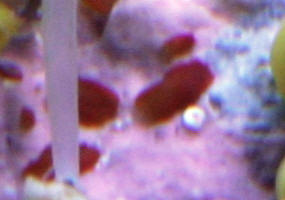
|
|
Frustration setting in! Reading...
flatworm ID, hair algae contr. 11/21/10
Hey there crew, Jordan here. So I'm asking for a little help
with an ID of sorts and am also getting to the point of
frustration. My tank has been up and running since May 2010. All
has been great so far until recently. I did loose several fish to
an Ich outbreak. I realize the problem is probably still there
but there is no way of getting the remaining fish out of the tank
or finding somewhere to put them as I only have a 10g QT. All the
fish I have purchased have been watched well at LFS and have been
there for at least 4 weeks before I touch them. I am down to 1
flame angel, 1 hippo tang, 1 false percula, 6 Chromis, 2 diamond
gobies, and 1 cleaner wrasse. All these fish appear ok as of
right now. My question is not
really with the Ich issue as much as with the sudden (last few
months) constant growth of hair algae and what appears to be
little brown/orange flakes covering a lot of the algae and rock.
This is the ID question I have and pictures to follow.
<Mmm, these are flatworms...>
All the corals that I do have, 1 frogspawn, 1 torch, 1 green Acro
frag, 1 open brain, 2 x Rhodactis are doing awesome.
Tank parameters
125g w/ 25g sump
3 x150w HQI canopy from AquaticLife 72"
All water parameters have always been perfect. I use AquaVitro
salt and do 10-15% water changes weekly. PH- 8.3 Sg 1.025
Nitrate/ite 0, Mg 1440, Cal 420ppm, Alk 3.5meq/l
I run 2 Vortech mp20 powerheads one on each side wall and a
Koralia 2 in one corner. If you have any suggestions re algae
problem or ID of flakes I would appreciate it.
<Read here: http://wetwebmedia.com/fltwmid.htm
and the linked files above... "control"...>
Feed x2 a day, New life spectrum pellets/ PE Mysis and Fish &
Reef #2 - one or the other
Clean up crew is roughly - 15 Nassarius snails, 6 turbo, 30 blue
leg hermit, 15 Cerith
Do I need more cleaners/algae eaters?
<Mmm, not the approach I would take... nutrient exclusion, use
by/through a DSB... remoted best...>
Is amount of flow possibly the problem?
<Possibly a contributing cause>
I really do not thing phosphates are the problem, I also have a
lrg bag of Chemipure elite in sump, 1 month old
Please any thoughts would be greatly appreciated. I know this
sounds like a lot to ask for.
<Mmm, not... Please read here:
http://wetwebmedia.com/avoidingalgaeproblesm.htm
and the linked files where you lead yourself. Enjoy the
process... a measure of all things is what you become by them.
Become yourself. Bob Fenner>
Jordan
|
|
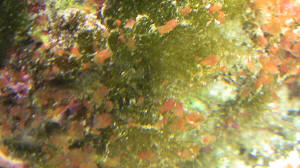
|
|
Polyclad flatworm?? 11/15/10
Hi everyone! I've been playing midnight peek-a-boo the last
couple of weeks and ran across this guy. After researching at
your sight I think he might be a Polyclad flatworm?
<Appears to be so>
I read that some might go after Tridacnid clams at
http://www.wetwebmedia.com/fltwmid.htm. I'm a little worried,
because I've had a couple of T. Croceas for a year and a
half and just purchased a T. Maxima and a T. Derasa. in the past
couple of weeks. I've attached the pics and hope you guys(or
gals) can help me out.
Thanks again!!
Greg
<Mmm, well... if you're too/that concerned, I would vacuum
this flatworm out. Bob Fenner>
|
|
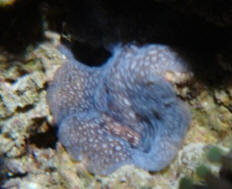
|
|
Polyclad Flatworm ID - 8/9/10
<Hello, Lynn here today.>
I found this huge 4" (Polyclad?) worm for the first time
after the lights went out after having my tank set up for over
two years!
<Yikes, that is a seriously big flatworm!>
Clearly, it has been able to survive off something in the tank
and thrive. The only specific ID on your website from something
that looked similar (a brown Polyclad as well) to this said it
was a clam eater (noting the clam-like mantle pattern on the
worms body)- but I don't see how this is possible since
there's no clams in my tank.
<Some Polyclads with that brown, blotchy appearance are indeed
clam predators but that sort of pattern is common to many
species.>
I have no intention of trying to trap it (even if I could) as
it's done no harm to my reef inhabitants for over two
years.
<I imagine it's done harm to something, but whatever it is
may be able to regenerate or multiply quickly enough to withstand
the Polyclads level of predation (at least so far).>
I am curious though, any idea what it is or what it eats?
<Unfortunately, I can't tell you much other than it does
appear to be a Polyclad flatworm of some sort. Identifying these
guys would be so much easier if there were only five species
worldwide! As for its diet, I'm afraid it's a 'same
goes', situation. All I can relay is that from what I've
read, most seem to be carnivorous predators that prey on anything
from Gastropods to small Crustaceans, Bivalves, tunicates,
Bryozoans, sponges or other sessile organisms, while others may
well be scavengers. I've even read that some might be
herbivores, but I can't confirm that. The problem is that
there are an awful lot of flatworms out there, and not all have
been studied.>
Sorry for the very poor picture quality but my camera
couldn't seem to get a good shot with all the Cyano on the
glass and bristle worms!
<No worries, I can still see what a neat not-so-little guy you
have there! I'm sorry I wasn't able to give you more
concrete answers. For more information on flatworms, please see
Bob's section re: http://www.wetwebmedia.com/flatworms.htm
Take care, Lynn Z>
|
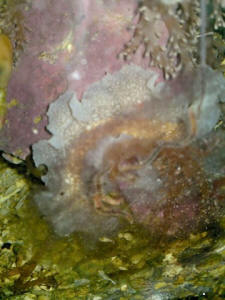  |
|
ID On An Unknown Creature: Likely Polyclad Flatworm --
7/4/10
Hello WWM,
<Hello Brandon, Lynn here today.>
My email is in regards to a creature that I cannot ID and have no
idea if it is safe for my reef.
<Fire away>
I have a 20L that I have had for going on 8 years. I have had the
same live rock since I started, up until about 6 months ago I had
the opportunity to buy some (an additional ten pounds or so) very
nice Marshall Island live rock off a reefer who was tearing down
their superb 125 reef. I absolutely love the rock and have had no
problems ever with known hitchhikers, or I may be oblivious
because I know there are a lot of them! Until last night I walked
by the tank and noticed a black blob coming out of one of the
holes that my Tailspot blenny is almost always perching out of.
It is about an inch and a half long, half an inch wide and
extremely flat. It also has a lot of tiny white dots all over its
back.
<I'm guessing that you didn't see any sort of antennae
or other protrusions on the back, or around the head?>
I know that some of these kinds of creatures have a shell, but I
could not notice one.
<Yep, some Scutus spp. look like black sea slugs with
sometimes covered, elongate, whitish shells on their backs. What
you have doesn't look like a Scutus though; the markings are
off. I've seen black/dark individuals with a marbled or
blotchy appearance but never one with actual spots. What you have
could be a Nudibranch of some sort but I think it's more than
likely a Polyclad flatworm. Polyclads are mostly nocturnal
predators that feed on small invertebrates and can move at a
surprisingly fast clip. I would remove this little
fellow.>
I noticed that it doesn't like the light, when I turned back
on all my lights from going to dusk it began to go back further
into this little crevice
<Typical behavior>
....which is the reasoning for the crappy pictures.
<Hey, they're good enough to tell that it's not a
Scutus! If you'd described a black slug-like animal to me,
that would have been the first thing that I'd have suggesting
ruling out.>
I am not sure what other information you need, but I have gone
ahead and attached three photos to hopefully help ID the unknown
creature.
<Thank you>
I just need to know if it is reef safe (hard, soft and clam
safe),
<Thank you for specifying! 'Reef safe' means different
things to different people. In this case, if indeed what you have
is a Polyclad flatworm then it should be safe around the corals
but iffy with the clam. I know of at least one species (Stylochus
matatasi) that's been implicated in Tridacnid deaths.
Thankfully, that's not what you have. I just used it as an
example.>
..how long it lives
<That I'm not sure of.>
..and if it is poisonous to my system if it dies?
<Well, from what I can tell, there are indeed toxins in at
least some Polyclads, particularly in the genus Planocerid.
I'm not sure if, or to what degree, they're present in
other genera/species. My thinking is that considering 20L (5.29
gallons) is such a small amount of water, it wouldn't take
much to cause a problem, whether ammonia or toxin related.
I'd err on the side of caution and remove the flatworm.
Please see the following links for more information and
comparison:
See Pseudobiceros sp. '#8' (click for larger image):
http://www.wetwebmedia.com/WormPIX/FlatwormPIX/Flatworms2.htm
See Pseudobiceros #3:
http://www.marinelifephotography.com/marine/worms/flatworms.htm
Scutus: http://www.seaslugforum.net/factsheet/scutus
>
I greatly appreciate your help!
Thanks,
<You're very welcome!>
Brandon
<Take care, Lynn Z>
|
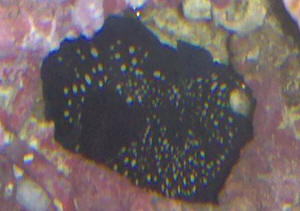 |
|

|
Features: |
|
|
